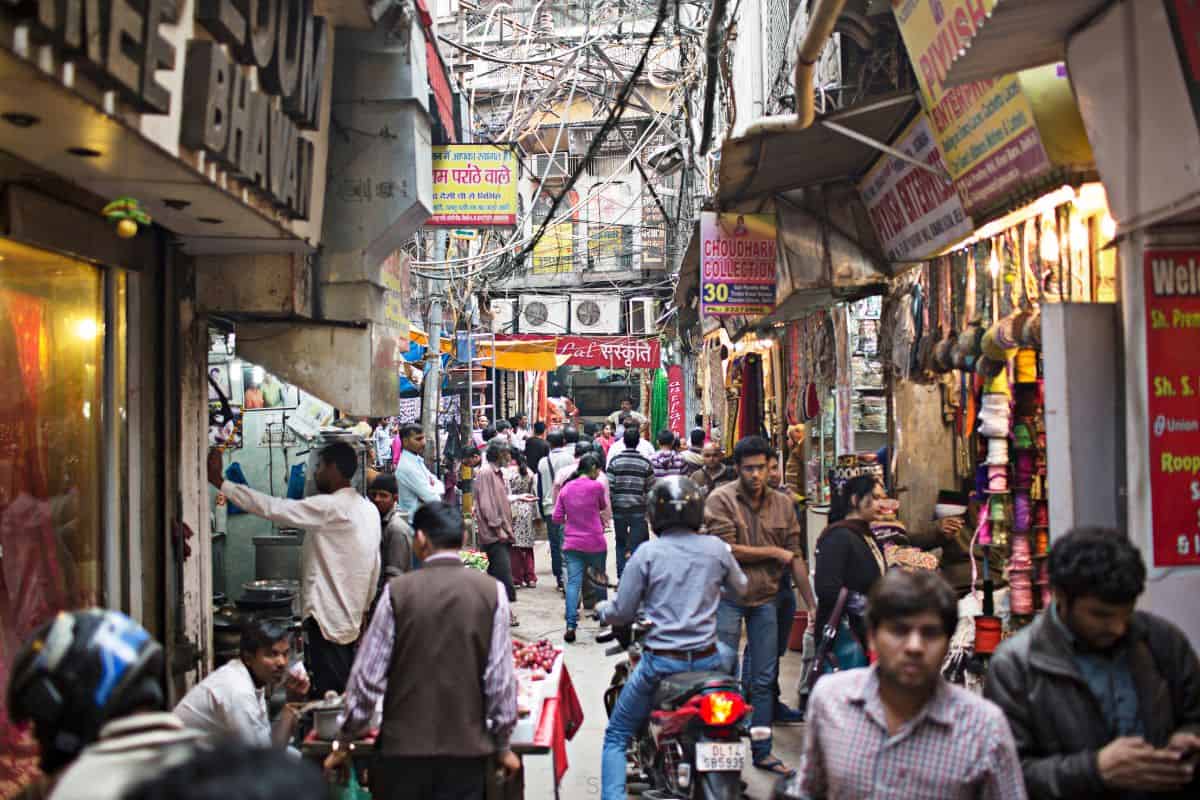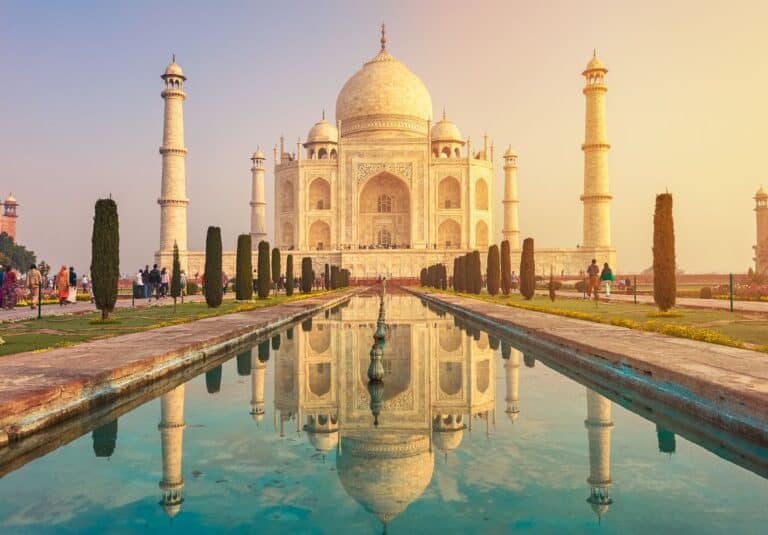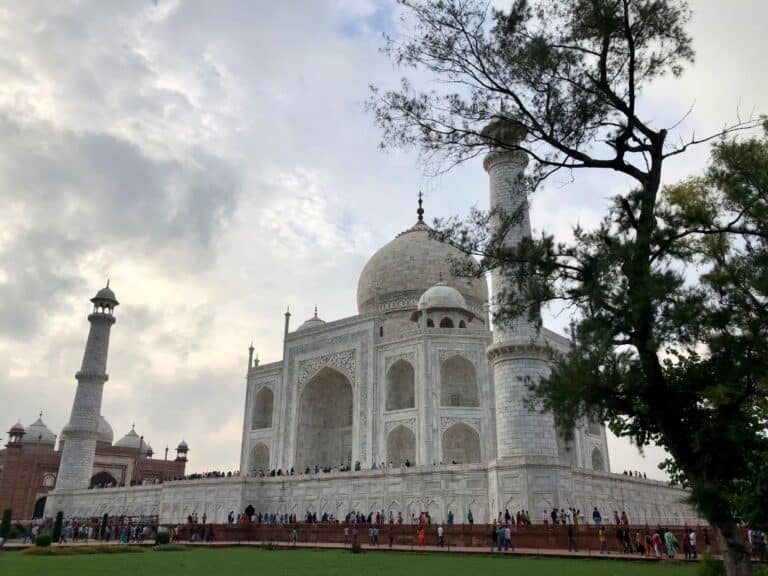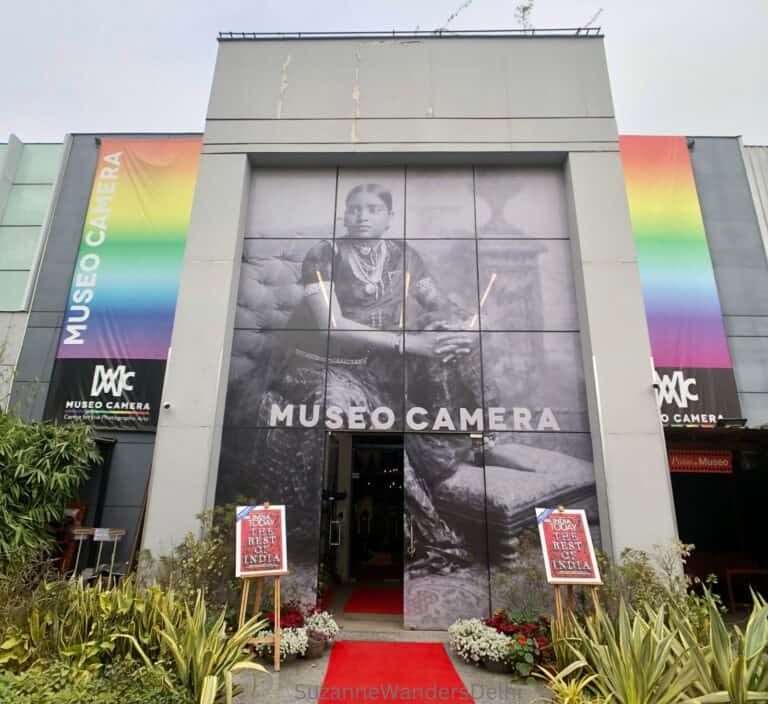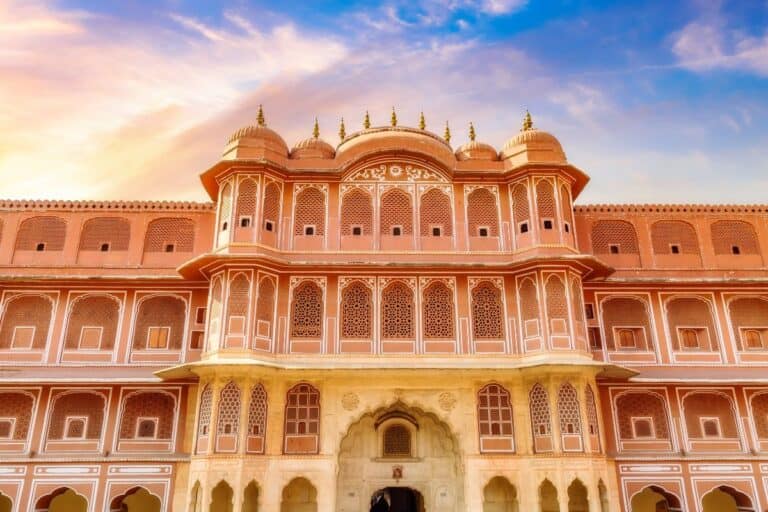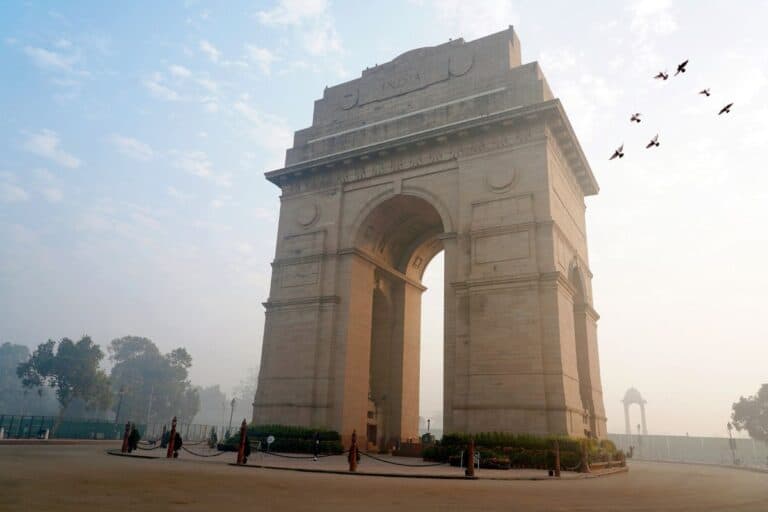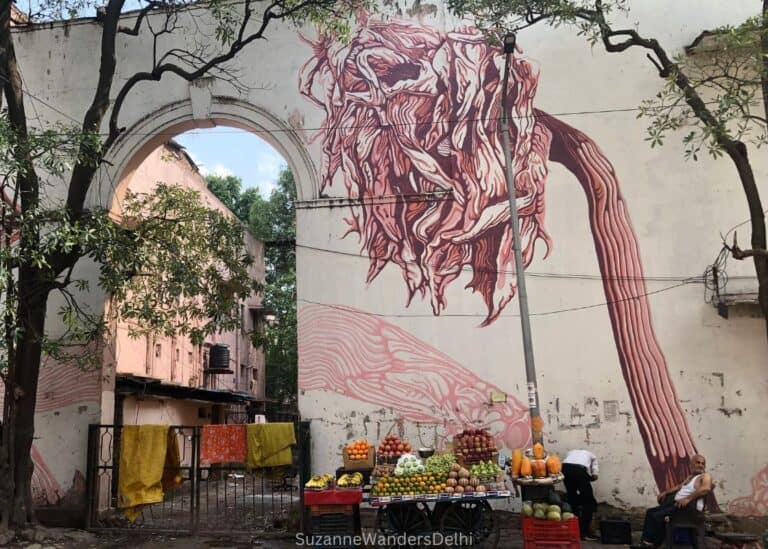Chawri Bazar: Exploring the Vibrant Chaos of Old Delhi’s Market

Chawri Bazar is one of Old Delhi’s most historic markets. Today it is famous for street food and paper products, but it has other charms too. I have been many times, and each time I go I discover something new.
After Chandni Chowk, this is the most famous and historic market in Delhi. It’s a warren of back lanes with surprises around every corner: hidden havelis (traditional mansions), old temples, and food stalls only the locals know about.
There is so much history and so many stories in this part of Old Delhi.
Visiting Chawri Bazar: Overview
Most tourists spend their time in Old Delhi on Chandni Chowk, but Chawri Bazar is worth visiting, and you can easily walk between the two.
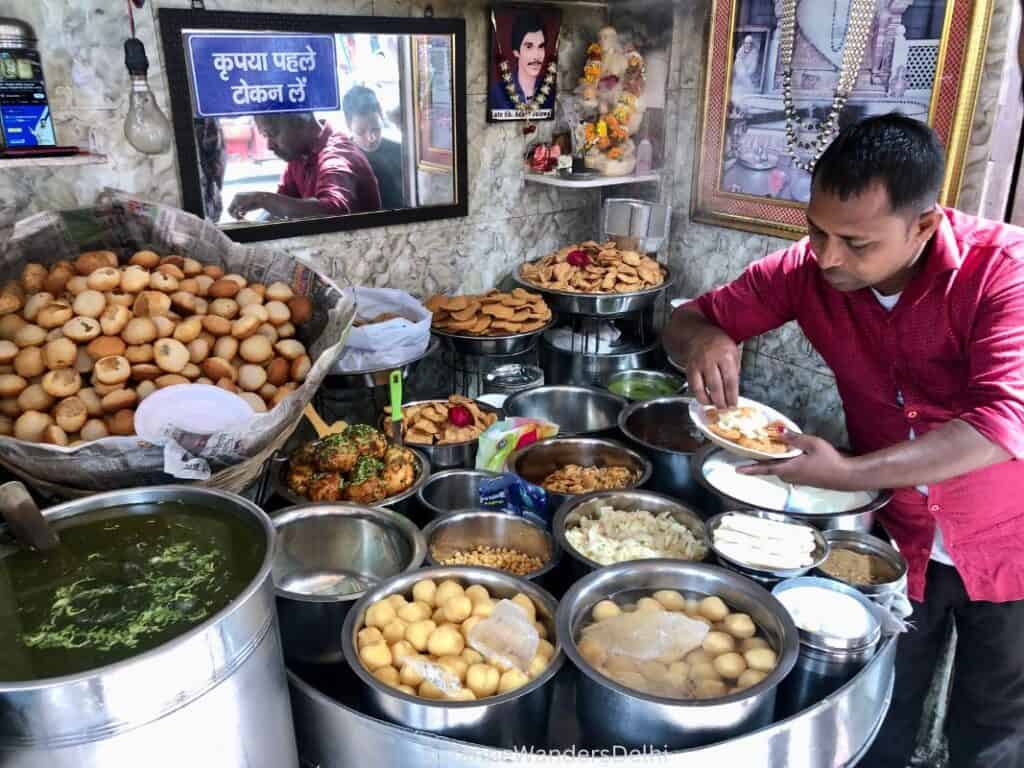
This will be a completely cultural experience. It’s Delhi’s oldest wholesale market, and little has changed in the last 100 years.
Be prepared for dirty, crowded and noisy roads, but keep an open mind. Many shops and food stalls have been there for generations, and the market is rich in history.
The main bazar is located in Old Delhi, on Chawri Bazar Road between Hauz Qazi (the junction where the Chawri Bazar metro station gate 3 is) and Jama Masjid. Take time to explore the back lanes and side roads off Chawri Bazar Road – this is where you’ll find small temples, mosques and some of the old havelis.
Today the market is famous for street food and all types of paper products, everything from wall paper to elaborate Indian wedding invitations. Many shops are in old havelis built in the 1800s.
If you look up to the second and third stories you can see the street facing balconies, a classic haveli design element.
Location: Chawri Bazar Road, Old Delhi
Hours: hours vary, but generally shops are open 11:00 am – 7:00 pm and food stalls are open longer. Most businesses in the market are closed on Sunday.
Price: no entry fee, food stands and some shops do not take credit cards
What To Expect
This part of Delhi is old with narrow streets and tight windy lanes. Chawri Bazar Road can be noisy and congested with people and various forms of vehicular traffic. Sidewalks are not great and in many places non-existent.
Be prepared for walking, bring a dupatta or scarf, and bottled water.
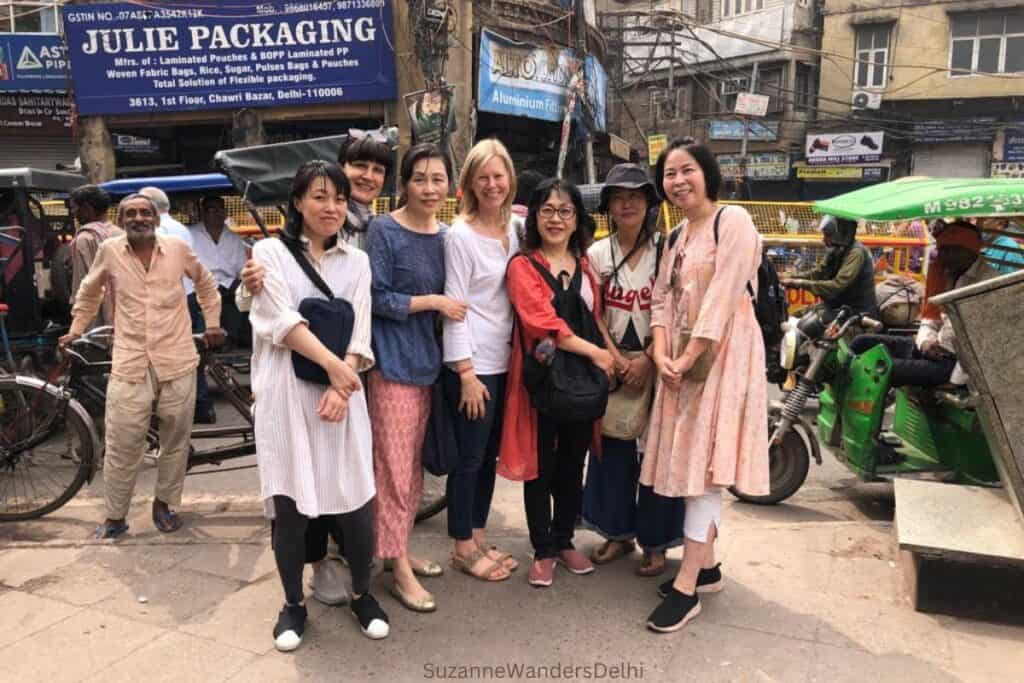
The distance between Hauz Qazi and Jama Masjid Road (where Chawri Bazar ends) is only about 700 metres, but you’ll probably want to explore a few lanes and side roads. You can expect to spend about 2 hours in Chawri Bazar, but it will depend on how fast and how deep you explore.
There aren’t many toilets in this area. Some of the restaurants near Jama Masjid, like Al-Gulzar, will have them, but I recommend you use the toilet at the Chawri Bazar metro station, gate 3 (at Hauz Qazi). The toilet is inside the paid area, but it’s reasonably clean.
Chawri Bazar History
The market was first established between the 18th and 19th centuries. It’s hard to imagine, but Chawri Bazar was originally lined with havelis, beautiful town homes belonging to the wealthy.
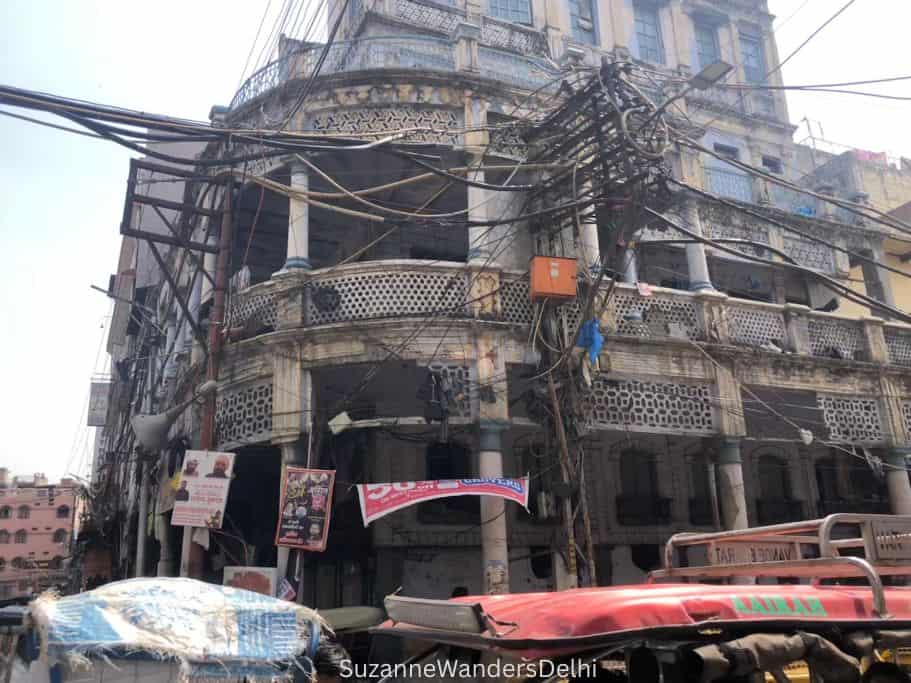
It was a popular promenade, especially among men as this is where the famous taiwafs resided and entertained. Taiwafs were the most accomplished of courtesans, and they had considerable influence. They were skilled dancers, singers and entertainers whose patrons were nobility.
If you look above the shops of Chawri Bazar you can still some see of these havelis with their long balconies and intricately carved arches.
During the Mutiny of 1857 many havelis were destroyed and the taiwafs were subsequently moved to MG Road (considered the Red Light district), gradually losing their power and prestige.
Chawri Bazar used to be a popular copper and brass market, but today it’s better known for paper products and street food.
What To Do and See in Chawri Bazar
Besides wander the lanes and marvel at the chaos, these are the best things to do in Chawri Bazar:
1. Shop for Indian Style Stationary
As you get closer to the Jama Masjid end of Chawri Bazar you’ll see a lot of paper shops. Some of them sell gorgeous wedding invitations and stationary in colourful Indian designs. My favourite of these shops is Matak Shatak, their envelopes make great gifts.
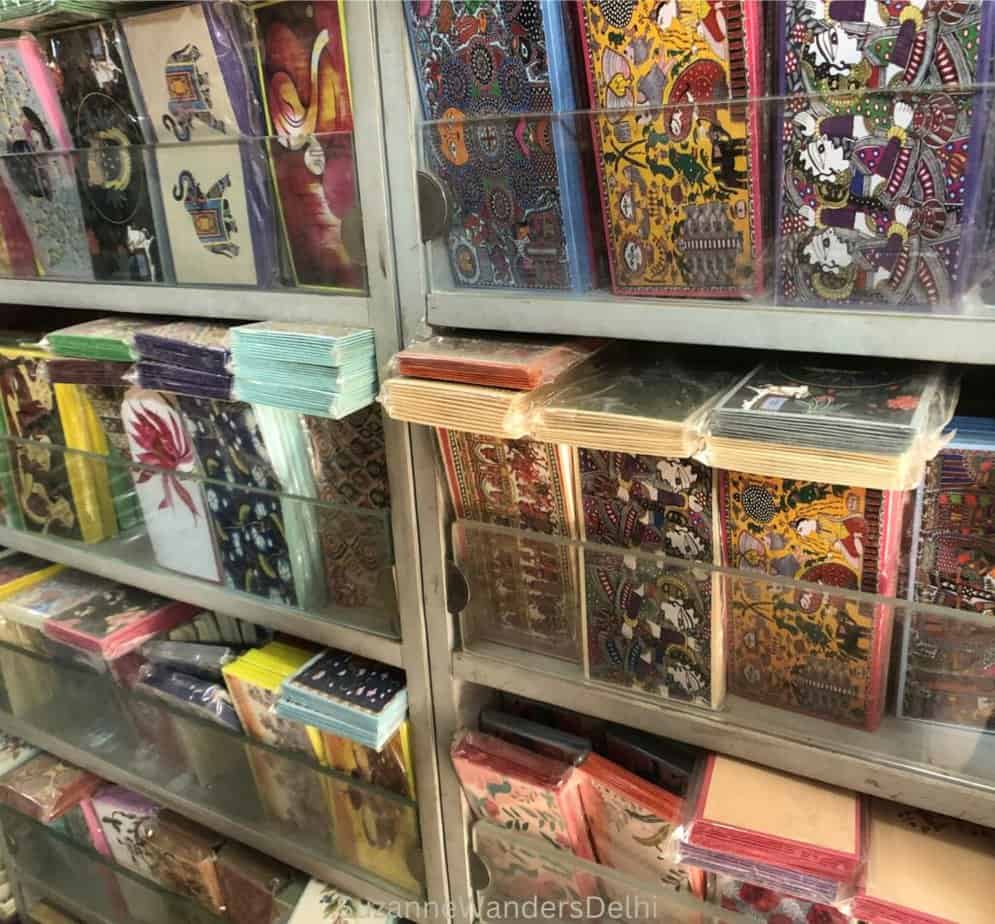
2. Eat Street Food
Chawri Bazar is street food ground zero. It’s easy to do your own street food tour, but these are some of my favourite stands and what you should eat. They’re all on Chawri Bazar Road, so relatively easy to find:
- Ashok Chaat Corner – papdi chaat & aloo chaat
- Shyam Sweets – gajar or mung dal halwa & bedmi puri with aloo sabzi
- Hira Lal Chat Corner – kuliya chaat
3. Visit Haveli Mirza Ghalib
Mizra Ghalib is Delhi’s most beloved and some say the greatest Mughal poet. The haveli he lived in has been turned into a small museum.
Ghalib loved Delhi and wrote many poems about the city, including some very sad ones after he witnessed its destruction by the British in the 1850s.
Admission to the haveli is free, and it’s open 10:00 am – 6:00 pm every day except Monday. You’ll have to walk through a series of lanes to get there, but it’ll be a good way to view a part of Old Delhi most visitors don’t see.
4. See Delhi’s Largest Mosque, Jama Masjid
This is the largest mosque in Delhi. It was built by the Mughal emperor Shah Jahan in the 1650s. You’ll be able to see it clearly as you walk down Chawri Bazar Road.
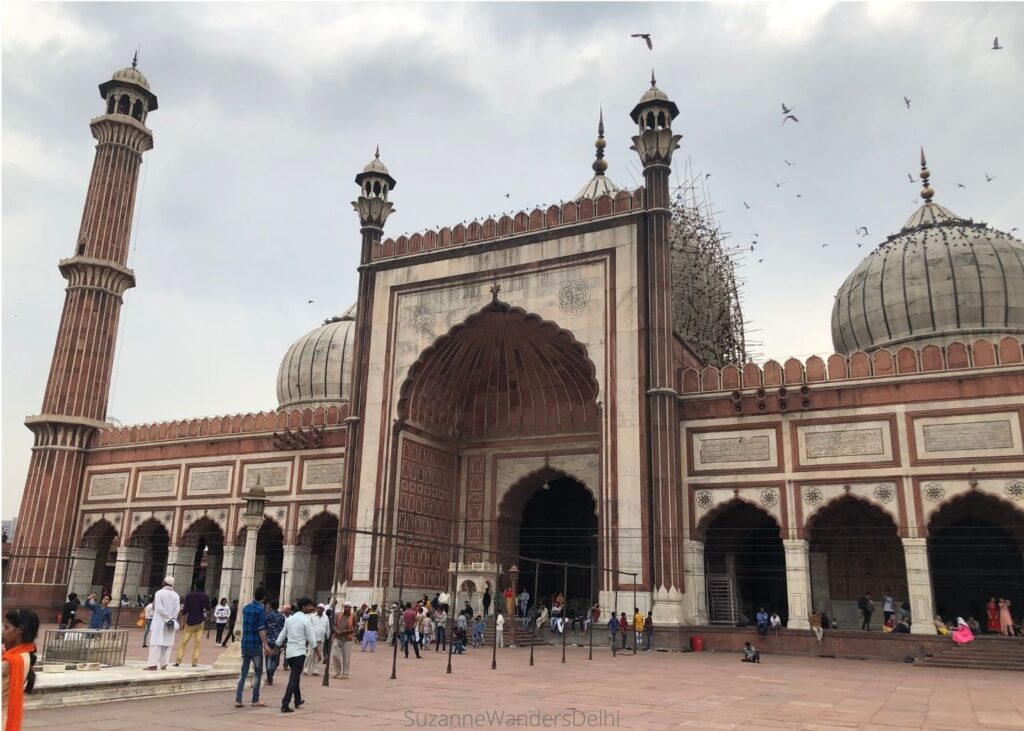
This is an active mosque and there’s a strict dress code. Knees and shoulders must be covered. Women should cover their heads, and shoes must be removed. The mosque has cover ups you can borrow.
On my last visit they were enforcing a INR 300 entrance fee for foreigners. But if you enter from the less touristy side at Meena Bazaar (directly opposite the Chawri Bazaar gate), you’re less likely to be charged. There is always a fee to bring in a camera.
5. View Masjid Mubarak Begum
This small but pretty red mosque was built in the early 1800s. It was named after the favourite wife of David Ochterlony, a major general in the British army who completely embraced Mughal culture.
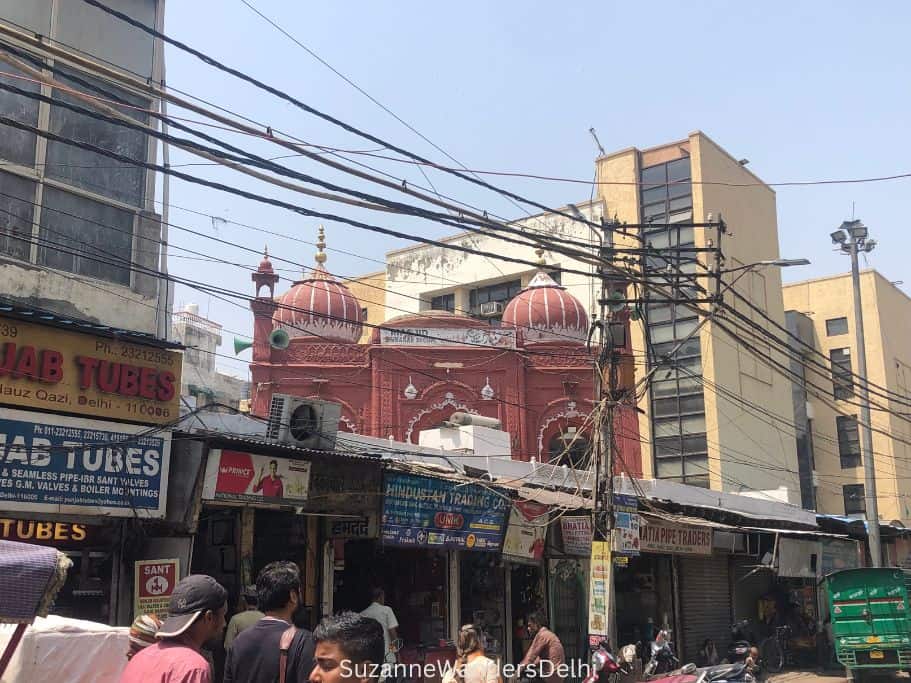
Mubarak Begum was originally a highly regarded courtesan, and the mosque is commonly known as Randi ki Masjid. This is often translated as prostitute’s mosque, but that’s not quite true. A randi was the highest level of courtesan and very respected.
The mosque is located very close to Hauz Qazi on Lalkuan Bazar Road. It has two distinctive red domes (there were three, but one collapsed); look up because it’s elevated. Women have to cover their heads and shoes must be removed.
How To Get To Chawri Bazar
The best way to get to Chawri Bazar is by metro. Take the metro to Chawri Bazar station on the Yellow line and exit at Gate 3. This will put you right in the middle of Hauz Qazi, the main junction. From there you can walk straight across Chawri Bazar Road.
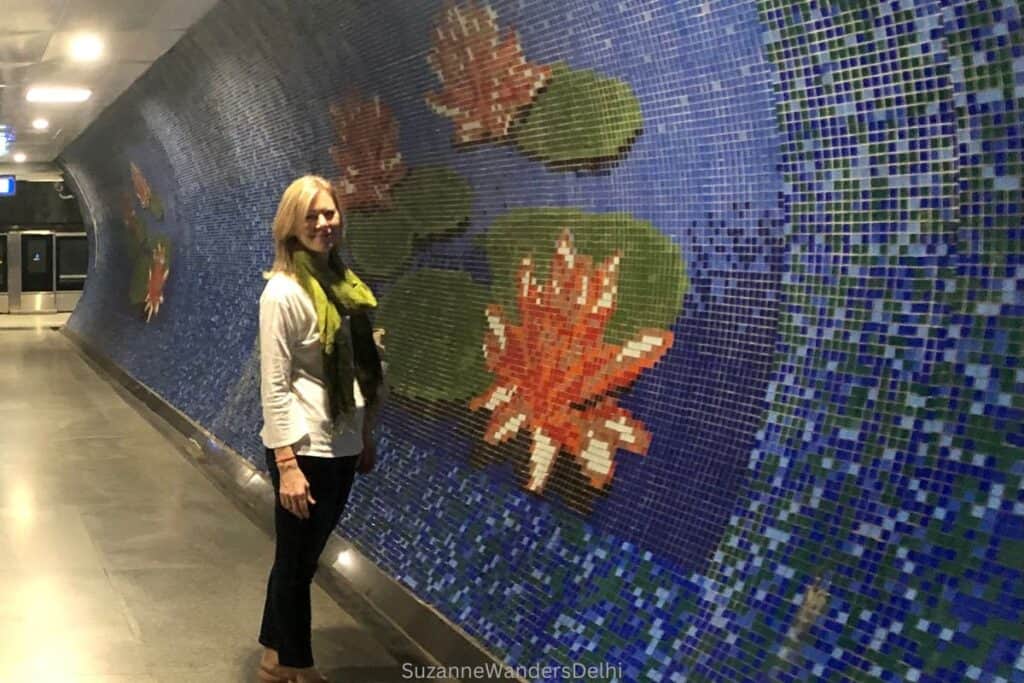
If you might need a bathroom break, take it here because there aren’t many toilets in Chawri Bazar.
Incidentally, this is one of the deepest metro stations in Delhi, at 21 metres. This section of the metro was one of the most challenging to build because of the historic and somewhat unstable city above.
You can reach Chawri Bazar by Uber or auto rickshaw, but a lot of drivers don’t want to come here because it’s so congested and takes too long.
Where To Stay
Central Delhi is a good area to stay in if you want to be near Old Delhi. You will be able to get to Chawri Bazar easily by metro. These are my top recommendations:
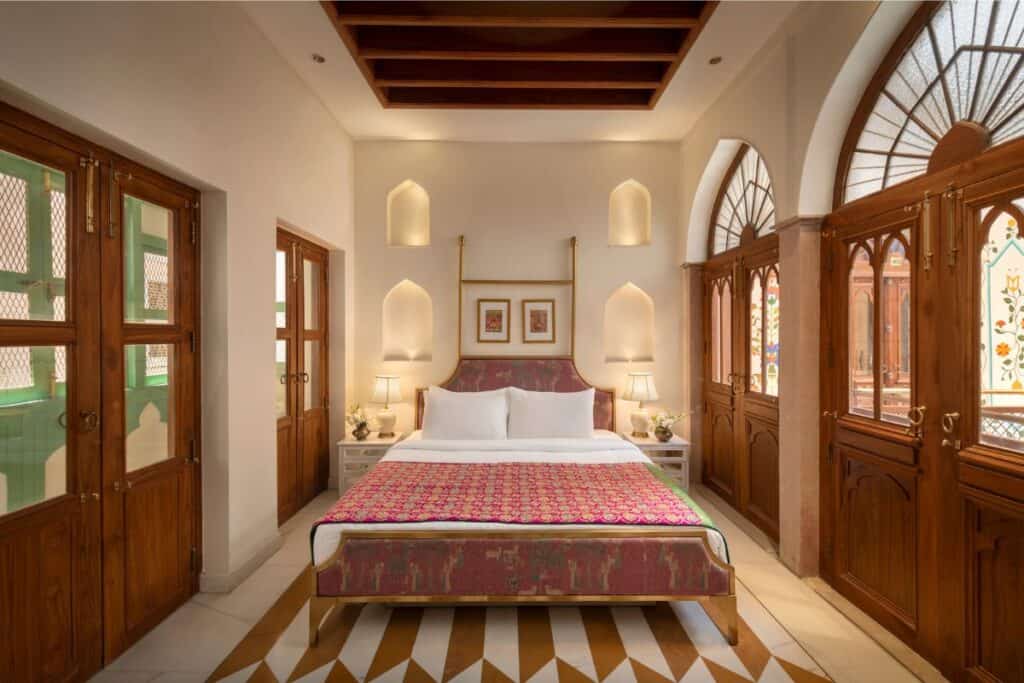
CP Villa Bed & Breakfast (budget)
Located in the quaint enclave of Gol Market, this small bed and breakfast has 4 guest rooms. Rooms are simple, but clean and comfortable with private bathrooms.
📍Check prices and availability at CP Villa Bed & Breakfast
Metropolitan Hotel & Spa (mid-range)
This place is great value. It’s the only 5 star hotel at this price point, and the location is very central. Guest rooms are comfortable, and the hotel has a spa, pool, business centre and restaurants.
📍Check prices and availability at Metropolitan Hotel & Spa
Haveli Dharampura and Golden Haveli (luxury)
These are two historic havelis which have been beautifully restored. They are both in Old Delhi, and while I don’t usually recommend staying in this area, if you want a truly special experience, stay in one of these two sister properties. You’ll be able to walk to Chawri Bazar and all the sites of Old Delhi.
📍Check prices and availability at Haveli Dharampura and Golden Haveli
FAQs
These are common questions about Chawri Bazar:
Chawri Bazar is a good place to buy Indian style stationary, housewares, brass deities, and hardware items.
Chawri Bazar is located in Old Delhi. The main market is along Chawri Bazar Road between Hauz Qazi and Jama Masjid.
Chawri Bazar was established between the 18th and 19th centuries as a wholesale market. Originally it was famous as the place where taiwafs lived and entertained. Many historic buildings were destroyed during the Rebellion of 1857 and the market has since become known for paper products and street food.
The Wrap-up on Chawri Bazar: Exploring the Vibrant Chaos of Old Delhi’s Market
When tourists come to Old Delhi, they mostly visit Chandni Chowk and Delhi’s world heritage site, the Red Fort. But if you want to explore something a bit more off the beaten path, visit Chawri Bazar. Although a bit gritty, Chawri Bazar is rich in history and full of life.
You Might Also Like…
- Heritage Walk of Old Delhi: An Insider’s DIY Tour
- Old Delhi Street Food Tour: An Insider’s Food Walk
- Exploring the Charms of Old Delhi: 20 Top Things to Do and See
Don’t forget travel insurance! It’s always a good idea to carry travel insurance just in case something goes wrong. I really like and use SafetyWing
